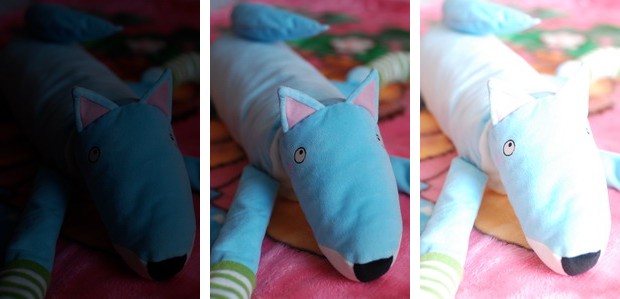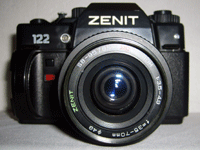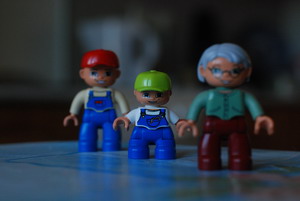Basics of photography: shutter speed, aperture, DOF, photosensitivity
Introduction
Often, people acquire digital SLR cameras in pursuit of image quality, but they have no idea about the technical aspects of shooting. This mainly concerns those who, before the DSLR, were holding exceptionally compact cameras and using automatic modes (which, by the way, are very advanced in modern cameras).
As a result, someone gets frustrated with the camera and the photograph as a whole, while others show patience and try to master the wisdom of photography to unlock the full potential of the camera with a full-fledged (or almost full-fledged) sensor.
Initially, I planned to write one article, but along the way I realized that the volume was too big and decided to break it into several parts. In this chapter, I will examine such concepts as shutter speed, aperture, depth of field and photosensitivity, as these parameters affect the result of shooting. The next step is an article about the types and parameters of lenses, work with flashes and tips for shooting in various conditions.
')
Exposition
Exposure is the amount of illumination of the photosensitive sensor. It is formed by two parameters - shutter speed and aperture - which are also called the “expopara”. Exposure should be of such magnitude as to provide the necessary amount of light to form an image on a sensor with a given photosensitivity (which is denoted by ISO, for example, ISO 100, ISO 800, etc.).
The greater the value of the sensitivity of the matrix, the less should be the exposure. In automatic and semi-automatic modes of operation, the camera calculates the exposure using a special sensor and other system parameters.
To transmit the entire light picture of the scene, it is necessary that the dynamic range (minimum perceived brightness and maximum) of the sensor be greater than the range of the scene being shot. If this is not possible, the exposure is chosen on the basis of properly working out the most important part of the frame.

Fig. 1. From left to right: underexposure, normal exposure, overexposure
Exposure
Exposure - this is the time for which the shutter opens the camera to light the sensor. The shutter in its full form is not available in all devices, in most compacts and various mobile phones, electronics play the role, the so-called “electronic shutter”, the shutter speed in this case is determined by the time between zeroing the matrix and reading information from it. There are still hybrid shutters.
The most common type of shutter - curtain-slit, it moves two curtains. In the cocked state, the sensor is blocked by the first curtain. When the shutter is released, this curtain opens the way to the light flux. At the end of the required time, the clearance is closed by the second curtain. Starting from a certain shutter speed, the shutter speed is no longer enough, and the frame starts to be illuminated by a slit formed by two curtains. The shorter the shutter speed, the smaller the slit. This feature causes two problems: distortion of fast moving objects and problems when working with a flash.
Since the exposure of the sensor is not uniform at short exposures, the shutter speed can be achieved only when the full area of the frame is opened at the time of the shooting. This value is called flash sync speed. In principle, it is possible to work at a shorter shutter speed, while the flash forms a series of light pulses, but its power drops.
Diaphragm
Generally speaking, the diaphragm is not a mandatory element of the camera, so in very simple soap and mobile phones, it is simply absent. The espoparas in them are not a couple at all; it is formed by one single parameter - the shutter speed of the electronic shutter.
The diaphragm in the direct sense is a partition, its value is inversely proportional to the amount of transmitted light and is denoted as a fraction 1 / k, where k are standard coefficients. In practice, only the denominator of a fraction is usually indicated. For example, if we set a f / 2.8 aperture on a lens with a relative aperture of 2.8, this will mean that the aperture on this lens will be fully open and will not participate in the shooting.
It would seem that if both of these parameters are responsible for the same thing — the amount of light falling on the matrix — can you use one? Can! But the diaphragm affects another very important parameter: the depth of the sharply depicted space (or just the depth of field).

Fig. 2. The work of the diaphragm
DOF
Let's try to figure out what affects the increase or decrease of the aperture in addition to the amount of transmitted light. The larger the aperture value (the smaller the physical opening), the greater the depth of field, that is, the area of precise focus around the subject.
When the aperture is open, the background is blurred - this effect is most useful in portraits to focus on the face. With the same diaphragm covered, landscapes are captured in which you want to sharply display the entire area of the frame.
I will not go into the technical details, give graphs and formulas, it’s enough to remember a few conditions that affect the amount of DOF:
1. Aperture. The greater its value (the smaller the physical opening), the greater the depth of field.
2. Focal length of the lens. The greater the focal length, the smaller the depth of field.
3. Distance to the subject. The closer the object, the smaller the depth of field.

Fig. 3. Aperture 2, shutter speed 800

Fig. 4. Aperture 4, shutter speed 200

Fig. 5. Aperture 8, shutter speed 50
It is clearly seen from the pictures that the depth of field at the open aperture is less than at the covered one. Also note that in order for the exposure value to remain unchanged, the second parameter of the exposure parameter has to be changed - the shutter speed (when the aperture changes by two feet, the shutter speed changes 4 times).
CROP factor
On Habré there is a good article about the crop factor and how it affects the depth of field, I recommend reading. In short, the value of the CROP factor means how many times the sensor area is less than the standard 35 mm frame.
It is because of the small size of the sensor that it is practically impossible to achieve a small degree of depth of power with compact digital cameras, except during macro photography. Therefore, photos from soap trays look less voluminous, especially portraits. At the same time, it is impossible to see the difference in landscapes.
Photosensitivity and noise
Perhaps the most hotly debated issue in photographic circles is the noise of the matrix. The sensor of a digital camera consists of many small sensors - pixels. They convert the amount of light falling on them into an electrical signal.
The photosensitivity of the camera matrix can be considered as the gain of this electrical signal. Since not only the useful signal is amplified, but also the matrix's own noise, an increase in the sensitivity of the matrix leads to an increase in the noise level. Noise is most noticeable in dark areas of the frame due to the lower signal-to-noise ratio of dimly lit pixels.
In practice, you should always strive to shoot at the lowest possible sensitivity from the main range of the device. It will be limited to the illumination of the scene and the maximum possible exposure time.
The larger the area of each individual pixel, the greater the amount of light falling on it per unit of time, physics can not be fooled. Therefore, I do not get tired of explaining to people that they are wrong when the main criterion for choosing a camera is sensor resolution. In fact, increasing the resolution of the matrix with its physical size unchanged is more likely to be harmful! This is nothing more than a marketing ploy of photo equipment manufacturers.
All modern digital cameras produce some image processing before it reaches the user, including noise reduction. With reasonable use of this feature, the result really gets better, but in the conditions of a megapixel race, such processing begins to bring negative consequences to the result of the shooting, which is manifested in the “blurring” of the picture, the lack of sufficient sharpness and detail.
The lowest noise level today is provided by cameras with a full-sized sensor (35 mm and more), and this happens precisely because of the large pixel area.
Examples of using excerpts for different scenes
Let us consider several characteristic cases in which different extracts are used.

Fig. 6. Short exposures are used for shooting dynamic scenes, they allow you to “freeze” the movement.

Fig. 7. Long exposures, on the contrary, “smear” the movement, which sometimes allows to achieve an interesting result.
In general, if the plot is banal and does not require special conditions, when shooting with hands, you should try to ensure that the shutter speed is not longer than 1 / f (lens focal length). For example, for a 50 mm lens, you should try to use shutter speeds shorter than 1/50 s.
Many modern lenses (and even some carcasses) are equipped with image stabilizers, but, unfortunately, I did not have to use them, so I cannot say how effective they are. Theoretically, this feature allows you to shoot at longer shutter speeds without the appearance of a characteristic image blurring (popularly, “shake”).

Fig. 8. Image blur at long shutter speeds.
To be continued...
Source: https://habr.com/ru/post/112822/
All Articles